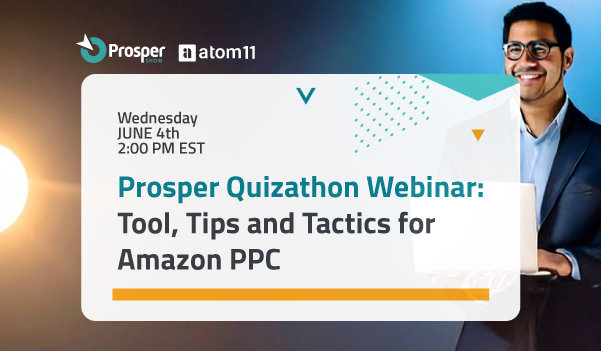Land on any Amazon guru’s squeeze page and you’re bound to see something like this:
“Just sold $36k yesterday. Join my course to learn all my secrets.”
You’ve got to love sales totals. They really are glamorous. They make us feel really nice inside.
But if you think you’re in the business of making high SALES, then you’re regrettably misguided.
If this guru thinks he has a $36k/day business, then he’s misguided too.
Let me illustrate with an extreme example:
Let’s imagine this guru keeps up his sales volume for a whole month and eventually tops a million dollars.
At first glance, we would probably say this guy has a 7 figure/month Amazon business.
But WHAT IF it cost him $900,000 dollars to produce those products.
Does he REALLY have a million dollar business or does he have a $100,000 business?
What if he sold all his products at break even to impress you and in turn get you into his course where he makes the REAL money?
Does he REALLY have a seven figure products business or does he have no products business at all?
The point I want to prove to you today is that if you run a products-based company, then you are NOT in the business of making sales…. you are in the business of making MARGINS.
It’s not the size of your sales that determines how successful you are. It’s the size of the margins that you create.
Here’s why:
In this illustration, you can see the whole concept of retail is founded on the idea of a supply chain where several entities specialize and cooperate in the process of turning raw materials into finished goods and bringing them to the end consumer.
Each party takes on some risk or performs some service and in turn creates additional value for the next entity in the supply chain and ultimately the consumer.
For most sellers, they add value as the retailer by taking on the risk of buying products in bulk from a manufacturer/distributor to lock in lower prices, then selling them individually to the end consumer for market price.
So total sales, in reality, represents the sum value of the entire supply chain, not just the retailer.
That begs the question then: shouldn’t you measure your business by the value YOU have added to the supply chain and exclude the value added by all the other parties?
Unfortunately, that’s not usually the case.
When we look at sales dashboards, we like what we see.
Yet, when we see how relatively low our bank balance or salary is, it perplexes us.
What I want to suggest is that a much more useful number than total sales is a number called Real Revenue.
In my experience, discovering Real Revenue is one of the single biggest financial eye-openers for products-based businesses.
It’s one of those moments of clarity when people get to see their business for what it REALLY is, not what it seems like.
Real Revenue is a term I get from the author Mike Michalowicz in his book, Profit First.
Here’s how I calculate it for most Amazon sellers:
Real Revenue = Total Sales – Amazon fees – Cost of Goods Sold
In simple terms, Real Revenue would be your biweekly payouts minus the cost of the inventory that was sold during those payouts.
Only AFTER you take out Amazon’s cut and the cost of your inventory do you get an accurate picture of the value your business brings to the supply chain.
Take Jack for example.
His average sales are about $50,000 per month.
Once Amazon takes their 30% cut, his payouts in a given month total about $35,000.
Once you account for the cost of the inventory he sold (40% of sales), he only has about $15,000 in profit left over.
That means he only has $15,000 to pay for software, supplies, labor, and his salary. Plus don’t forget taxes.
In Jack’s mind, he thinks his business is half way to seven figures. In reality, the size of Jack’s retail business is $180,000 because his Real Revenue is $15,000 per month.
Now $180,000 is decent money, but it’s not half a million either.
Let me stress something here: the point of Real Revenue is to help you think more critically about your finances, not just disappoint you.
Here’s two practical ways to start using Real Revenue in your Amazon business:
- Budget and manage cash based on Real Revenue.
In Profit First, Mike throws out some great initial targets to use for budgeting and cash management:
For more info, I would certainly recommend you check out his book on Amazon.
- Focus on increasing Real Revenue, not Total Sales.
There’s only ONE way to increase total sales: sell more.
There’s TWO ways to increase Real Revenue: sell more AND/OR find a way a way to capture more margin from the supply chain.
For example: how could you decrease Amazon’s cut in the supply chain?
One idea is to move upmarket and sell at higher prices. That will lower the fixed fulfillment fees as a percentage of total sales.
Another idea is to get more aggressive with your inventory on stock in the warehouse. Less storage fees equals more margin for you.
Another major way to increase Real Revenue without selling more is to decrease your suppliers’ cut in the supply chain.
When was the last time you asked for more competitive pricing?
When was the last time you shopped around?
I’ve had several clients who have increased their margins significantly by either cutting out a middleman, traveling to the manufacturer to get better rapport, or seeking out competitive bids.
Chances are that you’ve been thinking extensively up to now about how to increase sales, but probably not so much your margins.
Remember: you are in the product MARGINS business, not the product sales business.
So let me close by asking you the question we started with: how big is your business… really?
I encourage you to sit down today and calculate your Real Revenue and start thinking critically about how to grow it.
MuseMinded‘s sole mission is to empower Amazon sellers to conquer the financial corner of their businesses, so they can build their ideal lifestyle.
Through do-it-yourself courses or done-for-you services, we will help you streamline and master all of the core processes of running your ecommerce finances.
* * * * * * * * * * * * * * * * * * * * * * * * * * * * * * * * * * * * * * * * * * * * * * * * * * * * * * * * * * * * * * * * * * * * * *
If you enjoyed this content, consider joining us at PROSPER Show, March 13-14, 2018 at the Las Vegas Convention Center. 



Recent Comments